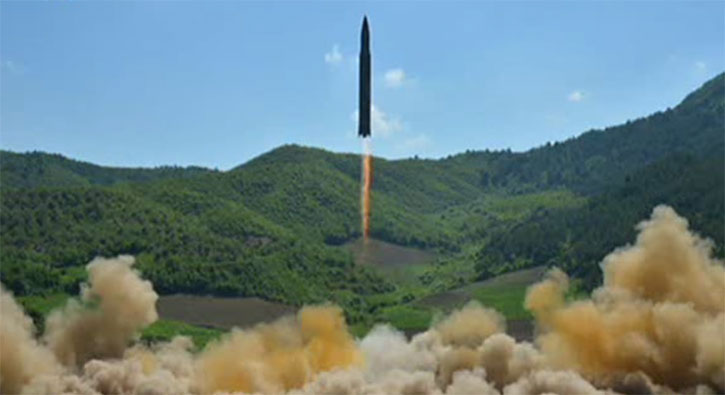North Korea tested today the largest ballistic missile developed by the rough country. The missile believed to be the KN 14 (Hwasong 14). The missile was launched from the Panghyon test site, located in the north-western part of the country. With a range of 7,000 km, the missile covers the entire Asian continent and can reach any target from Hawaii to Australia, India and Scandinavia.
Pyongyang claimed the missile reached a height of 2,802 km (1,741 miles). Launched at a very high ballistic trajectory, the missile flew for 40 minutes and splash in the Sea of Japan, 933 kilometres (580 miles) from its launch site. But, if such a missile would be launched at a minimum energy (maximum range) trajectory it would have travelled about 7,000 kilometres (4,350 miles), formally becoming North Korea’s first Intercontinental Ballistic Missile (ICBM – defined as a weapon with a range exceeding 5,500 km (3,417 miles).
At this range, the KN-14 will cover the entire area of Alaska and parts of Hawaii. On May 14, this year North Korea proved the capability to launch the KN-12 Intermediate Range Ballistic Missile (IRBM) to an altitude of 2,100 km (1,300 miles), and range of 700 km (435 miles), thus can reach the US base on the Pacific island of Guam.

North Korea developed several missiles designed for strategic, long range attack. KN-12 and KN-14 are both use liquid fuel and are likely using the same main engine, which uses four steering rockets for stabilisation. The KN-12 has a single stage while KN-14 has two stages, thus the added range. KN-14 hasn’t been launched before, but its rocket engine was tested several times since its first public appearance in 2015.

Analysts believe the KN-14 can reach a maximum range of 8,000 km, meaning it could reach Hawaii, Alaska and almost all the Washington state in the North-Eastern USA. The missile’s warhead uses a reentry vehicle that can carry a nuclear device that Pyongyang has already displayed. North Korea five tests, the most recent was last year, with a yield estimated at 20-30 kilotons.






















